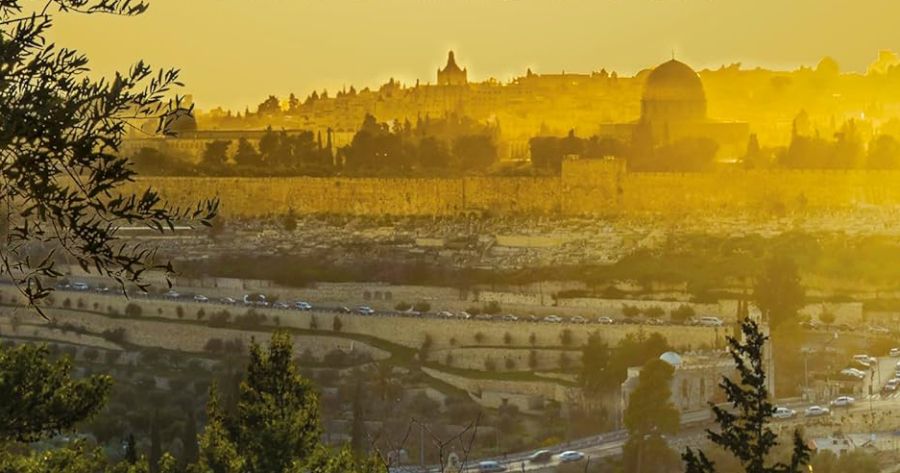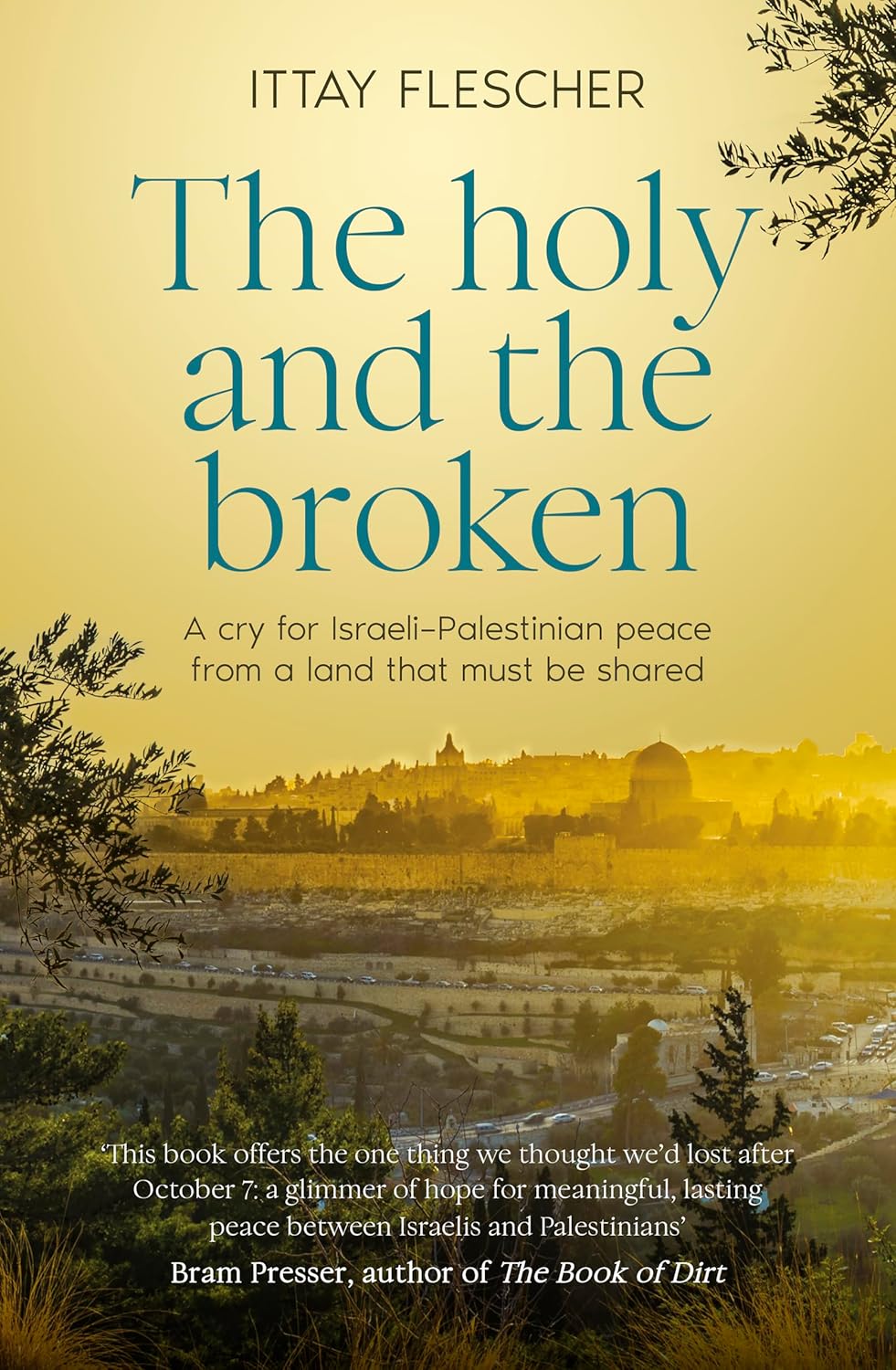
- Free Article: No
- Contents Category: Middle East
- Review Article: Yes
- Article Title: Stubborn hope
- Article Subtitle: A radical message of coexistence
- Online Only: No
- Custom Highlight Text:
Part memoir, part manifesto, part ‘moral reckoning’, Ittay Flescher’s The Holy and the Broken opens with a tribute to Leonard Cohen’s ‘Hallelujah’. Flescher names Cohen’s timeless ballad Jerusalem’s unofficial anthem, infused as it is with Biblical allegory and, at times, a kind of despair-filled nihilism. Whereas Cohen imagined the Hebrew liturgical expression as either holy or broken, depending on the inclinations of those who heard it, for Flescher, his own newly adopted home of Jerusalem is both holy and broken at the same time. It is Flescher’s fervent wish, and the mission of his book, that the city’s diverse inhabitants come together to ‘mend what is broken and build a future that honours the holy aspirations of all of us who call this land home’.
- Book 1 Title: The Holy and the Broken
- Book 1 Biblio: Harper Collins, $36.99 pb, 320 pp
- Book 1 Cover Small (400 x 600):

- Book 1 Cover (800 x 1200):

- Book 1 Readings Link: https://www.readings.com.au/product/9781460767078/the-holy-and-the-broken--ittay-flescher--2025--9781460767078#rac:jokjjzr6ly9m
The Holy and the Broken was written in the shadow of October 7 and the cataclysmic war that Israel unleashed on Gaza in response to it. Flescher is a longtime activist and educator whose organisation, Kids4Peace, facilitates peacebuilding workshops for Israeli and Palestinian youth. Some of the most compelling parts of his narrative explore the divergent responses to the devastating violence experienced by his Muslim, Christian, and Jewish workshop participants and their families. To some, including Flescher himself, the unbearable savagery and loss of life give greater urgency to the task of achieving peace and reconciliation between Israelis and Palestinians. To others, such efforts appear hopelessly futile and even naïve given the sheer scale of the destruction and dehumanisation of the past two years, and the decades which preceded them.
What makes The Holy and the Broken unique amid the plethora of recently published books on the subject of Gaza and the broader Israel-Palestine conflict is its stubborn assertion that coexistence is still possible. Flescher is unfailingly upbeat and optimistic. Yet, his years of peacebuilding work in one of the most divided cities in the world have ensured that his eyes are open to the cruel realities which often undermine his organisation, and others like it. He describes, for example, an annual joint memorial, conducted simultaneously in Hebrew and Arabic, for the bereaved families of both Israelis and Palestinians who have lost loved ones in the conflict. Prior to October 7, this event had attracted 150,000 in-person participants. Its 2024 iteration was attacked in both Israeli and Palestinian mainstream discourse and had to be prerecorded and streamed online. The challenges faced in this attempt to foster solidarity through the shared pain of both sides illustrates the wildly divergent narratives which have entrenched themselves among supporters of both Israel and the Palestinians (including in Australia). In a time of such devastation and suffering, any attempt to humanise or express empathy for ‘the enemy’ was perceived by both communities as a step too far.
Flescher’s prose tends to veer into the didactic, and at times his analysis suffers from over-simplification, both traits undoubtedly the result of years spent teaching and mentoring young people. Despite this, however, Flescher frequently offers up nuggets of wisdom which challenge not only accepted narratives about the conflict, but possibly the reader’s own preconceptions. Reflecting on polarising algorithms and social media echo chambers, for example, Flescher identifies a ‘fundamental attribution error: we assume that our radicals are exceptional, while the other side’s radicals are definitive’.
Such an observation goes a long way to explaining the gulf which has opened up between how the conflict is perceived by supporters of each side. It is not uncommon, for example, to hear some Israelis and their advocates in the diaspora claim that all Gazans support Hamas and its atrocities on October 7, the implication being that the collective punishment of the civilian population in Gaza is therefore, in some twisted way, justified. Similarly, some Palestinians and their supporters conflate all Israelis or Jews with Benjamin Netanyahu’s far-right government and its war crimes, ignoring the sizeable anti-government protests and the anti-war efforts of people like Ittay Flescher inside Israel itself.
In fact, one of the most salient contributions made by The Holy and the Broken is its effort to insert much-needed nuance into the debate on Zionism itself. Declaring his intention to ‘comfort the troubled and trouble the comfortable’, Flescher decries the messianic and exclusivist Zionist ideology of an Israeli government in thrall to the far-right settler movement. Yet he also challenges emerging narratives in some parts of the West which promote a reductive understanding of Zionism, premised on the notion that the racist ideology of the Netanyahu government is the only, or the true, Zionism. Flescher bravely offers an alternative. With sensitivity and empathy for all the Palestinians who have suffered and lost during more than a century of Jewish settlement in the Holy Land, Flescher articulates a kinder, more humanistic Zionism which need not be incompatible with Palestinian self-determination. The Holy and the Broken concludes with a proposal for a radical, and perhaps hopelessly utopian, vision of an Israeli-Palestinian confederation, in which both peoples retain their separate national governments but dismantle all borders and share the land between the river and the sea.
It is impossible not to be moved by Flescher’s enthusiasm and hope for a better future, even if one remains deeply pessimistic about the likelihood of achieving an enduring peace in our lifetimes in this long-contested strip of land. As with the conflict in Northern Ireland, Flescher understands that peacebuilding will succeed only when it flourishes at the grassroots, and when the seeds of coexistence are planted in the hearts and minds of the next generation. It is hard to disagree with the book’s assertion that in ‘creating space for one another’s narratives, learning one another’s languages, taking a wider view of our history and uplifting the often-ignored stories that show there is a partner for peace, a new future becomes possible’. However, one cannot help but reflect on the unimaginable scale of the death and destruction wrought by Israel in Gaza and the open wound which is the continued suffering of the Israeli hostages. The sheer magnitude of this tragedy, and the dehumanisation it has unleashed on both sides, could set back Flescher’s cause by generations.
The Holy and the Broken offers a rare glimmer of hope for those who are heartbroken by two years of devastating war in which far too many innocents have perished. Perhaps even more, however, this book was written for readers who have hardened their hearts behind absolutist and uncompromising positions, in which anything less than the expulsion or eradication of the other side is unacceptable. While Flescher achieves his objective of comforting the troubled, it remains to be seen whether his radical message of coexistence and compromise will trouble those long comfortable in their entrenched and deeply held views on the conflict.


Comments powered by CComment